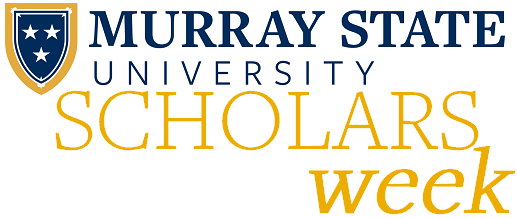
Honors Theses & Other General Science Research
Subscribe to RSS Feed (Opens in New Window)
| 2016 | ||
| Thursday, April 21st | ||
| 12:30 PM |
Bioenergy Corp Production and Combustion in Agriculture Vaughn T. Reed, Murray State University Barkley Room, Curris Center 12:30 PM - 1:30 PM Biomass, vegetative waste from energy crops such as switch grass and sorghum, is a key input for transforming the face of energy and agriculture for the future of Kentucky, the nation, and the world. The purpose of this experiment at Murray State University using the Bio-Burner 500 unit—BB-500— from L.E.I products in Madisonville, KY, was to evaluate the efficiency of a combustion-based energy converter and boiler using various biomass materials, along with providing some heat to The Equine Center at Murray State University. Loose forms of switch grass, tobacco stalks, miscanthus, equine waste, wood shavings and mixtures of these fuels were burned over a 24 hr period in outdoor temperatures below 68°F. Factors including burn and ash weight, ash clinkers, fan and fuel speed, moisture levels of material, and BTU measurements were recorded to assist in determining the success of each burn trial and overall energy balance of the system. Upon analysis of the data, the biomass with the most productive burn proved to be the wood shavings. The least productive burns proved to be the cellulosic biomass, which included miscanthus and switchgrass, and the equine waste. The grasses burned less effectively than the woody materials, however, it required less material. Equine waste, while plentiful in our area, produces high ash amounts, and has a high affinity of making ash clinkers. Wood shavings and tobacco stalks burned more effectively, and less labor intensity, however, more material was required. The research conducted in this study can provide Murray State and the scientific community insightful information about future applications of bioenergy. |
|
|---|---|---|
| 12:30 PM |
PIASy and Ubc9 mediated SUMOylation enhances Glis3 transcriptional activity Tyler M. Hoard, Murray State University Barkley Room, Curris Center 12:30 PM - 1:30 PM Gli-similar 3 (Glis3) is a Krüppel-like transcription factor that has been implicated in a number of human pathologies including polycystic kidney disease, Alzheimer’s disease, and cancer. Further, Glis3 has been shown to play a critical role in the regulation of insulin transcription and defective Glis3 signaling is associated with the development of both type 1 and type 2 diabetes. Despite its clinical significance, little is known about the proteins or posttranslational modifications that regulate Glis3 activity. In this study, we have identified two specific regions within the Glis3 protein that are targets for the small ubiquitin-like modifier (SUMO). We show that SUMOylation of Glis3 is mediated by proteins belonging to the Protein-Inhibitor of Activated STAT (PIAS) family as well as the E2 SUMO-conjugase, Ubc9. While the functional effect of SUMOylation on Glis3 remains unknown, we found that PIASy and Ubc9 co-expression significantly enhanced the transcriptional activity of Glis3, possibly by increasing Glis3 association with the ubiquitous co-activator, CREB Binding Protein (CBP). Collectively, these data identify SUMO as a novel regulator of Glis3 transcriptional activity and provide possible therapeutic targets for the treatment of Glis3-associated disease. |
|
| 12:30 PM |
Taylor C. Rhoades, Murray State University Barkley Room, Curris Center 12:30 PM - 1:30 PM Thiol-ene "click" chemistry is a rapid radical mediated process between readily available thiol, -SH, and an alkene, C=C, that can be done in mild solvent conditions. Ionic liquids are poorly coordinated salts with low melting points that exhibit properties like low toxicity profiles, reduced volatility, low flammability and the ability to dissolve aqueous and organic-soluble materials. Poly(ionic liquid)s are polymerizable ionic liquids that combine the unique thermal, mechanical and electrochemical properties of ionic liquids while restraining the cationic or anionic center within the repeating unit of the polymer chain. In this study we used the poly(ionic liquid) 1,3-diallylimidazolium bis(trifluoromethylsulfonyl)imide was prepared along with pentaerythritol tetrakis(3-mercaptopropionate) in five different molar ratios to investigate the differences in thermal, mechanical and electrochemical properties in order to determine optimal crosslink density. It was found that the 1.0:2.0 network exhibited the highest glass transition temperature and storage modulus. The 1.0:3.0 network exhibited the highest conductivity. |
|

